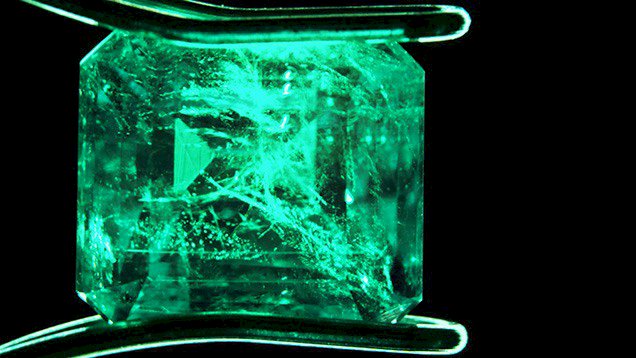The Quality and Value of an Emerald Depend on the Combination of Some Criteria
What defines the quality and value of an emerald?

Carats
The weight of a cut emerald is measured in carats. 5 carats = 1 gram. All other criteria being equal, the greater the carat weight, the rarer the emerald and, therefore, the greater its value. The approximate appearance of a well-cut octagon-shaped emerald for a given carat weight is illustrated below.

Lapidary
SHAPE AND CUTTING
To optimize natural roughness, emeralds are cut and polished in a wide variety of shapes, as illustrated below.

PROFILE
Cut refers to the precision of the angles, proportions, symmetry and polishing of the emerald. This greatly affects the way the light travels inside the emerald and how it comes out in the form of a glow.
The color
Color is a matter of personal preference. Emeralds vary in color depending mainly on their chromium and vanadium content. Therefore, emeralds from different countries and mines have different predominant colors. Emeralds range from bluish and yellowish tones to browns. However, a natural color will always have a higher value than an equivalent color obtained by any other process.
Main countries where emeralds are extracted: Afghanistan, Brazil, Colombia, India, Madagascar, Nigeria, Pakistan, Russia, South Africa, Tanzania, Zambia and Zimbabwe.

Clarity
Inclusions
The clarity of an emerald is determined by the number, size and location of the inclusions present in the stone. They reflect its fascinating geological aspects. Also internally and externally, there may be the presence of cracks, fractures and cavities that affect clarity.

Transparency
Transparency refers to an emerald's ability to transmit light. It is affected by the amount or absence of opacity and shine present in the stone.
In the figure above we have respectively the characteristics Transparent - Translucent - Opaque

Modi fi cation
A NATURAL UNprocessed EMERALD IS VERY RARE; IT HAS AN INTRINSIC VALUE GREATER THAN ONE THAT SUBMITTED ANY OF THE FOLLOWING MAIN PROCESSES:
MODIFICATION OF CLARITY: In addition to cutting and polishing, emeralds are commonly modified to improve their color and clarity.
FISSURE FILLING: Fissures, large fractures and cavities can be filled with colorless and / or almost colorless oil, resins or other agents to significantly improve clarity.
DYED: Beryl / Emeraldas can undergo a substantial color change by filling cracks and fractures with colored agents. Customers need to be informed of these changes. Ask for written confirmation.
Value of a gemstone
In addition to the information on the front, the value of a precious stone is also defined by the combination of relative beauty, rarity and durability. Synthetic and imitation stones can be produced in industrial plants in any quantity and, therefore, are not uncommon and are not considered precious. As a result, they cost much less than their natural counterparts of equal characteristics.


